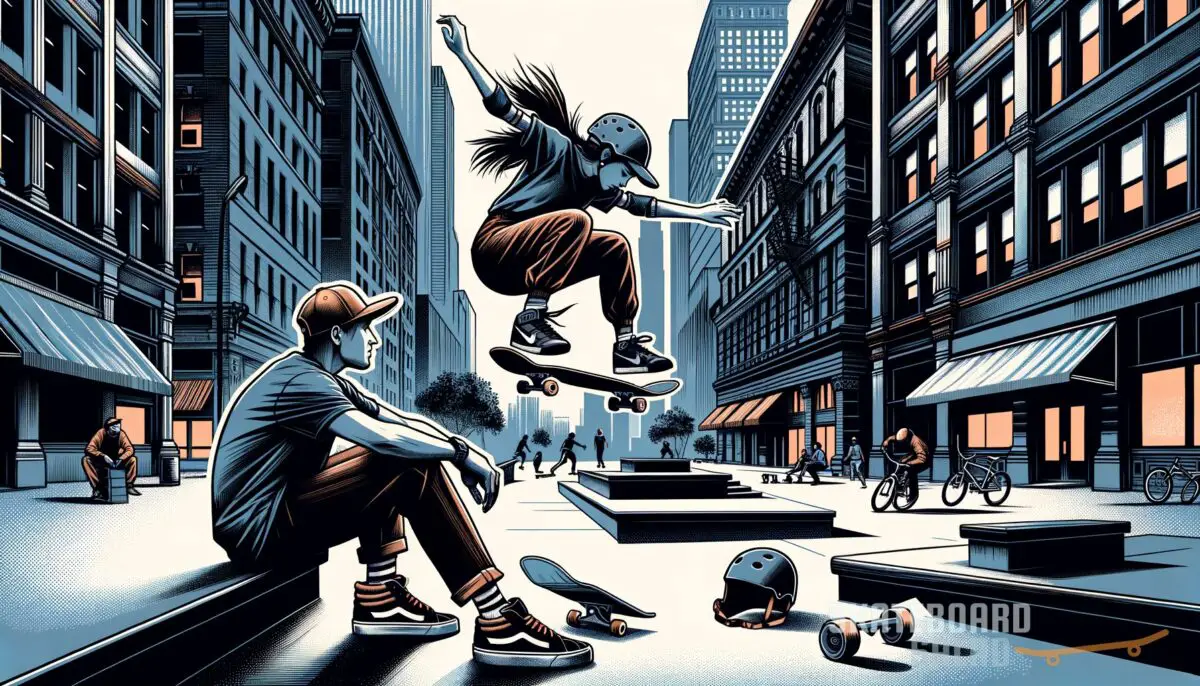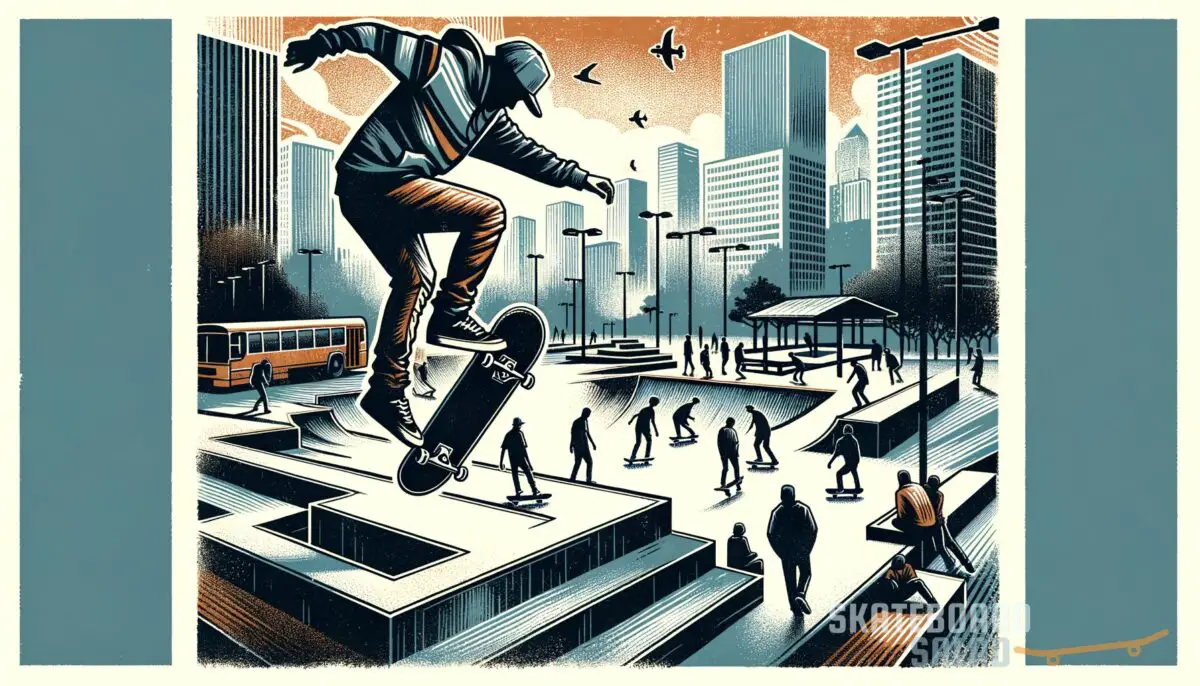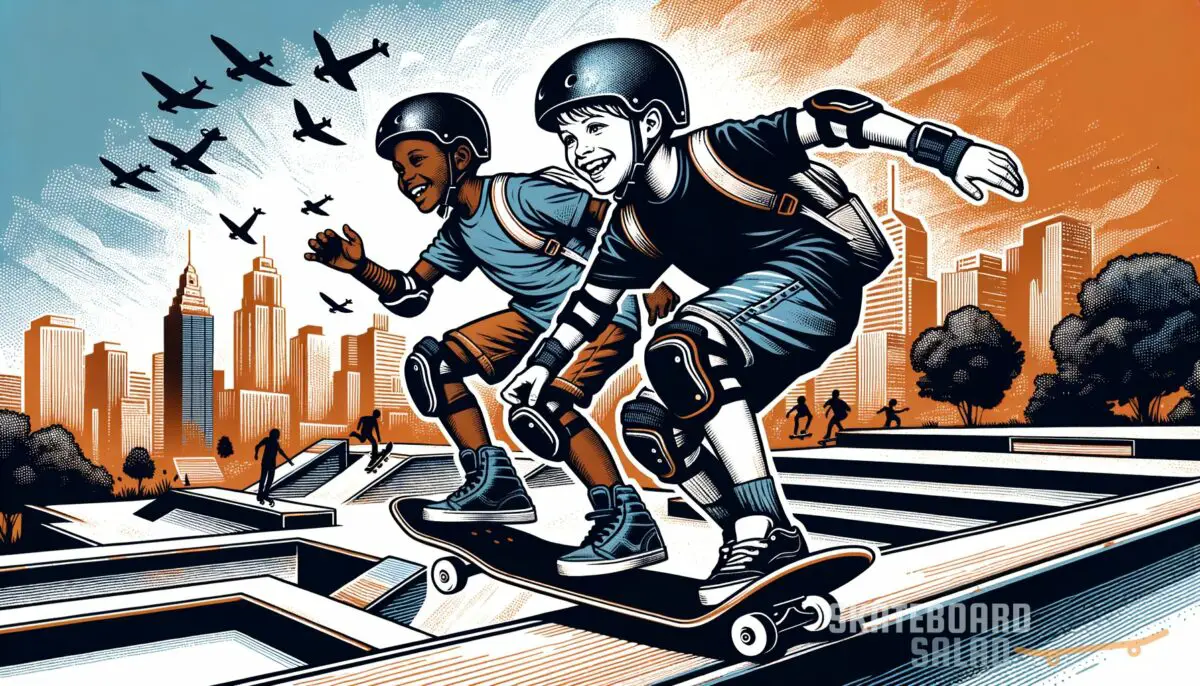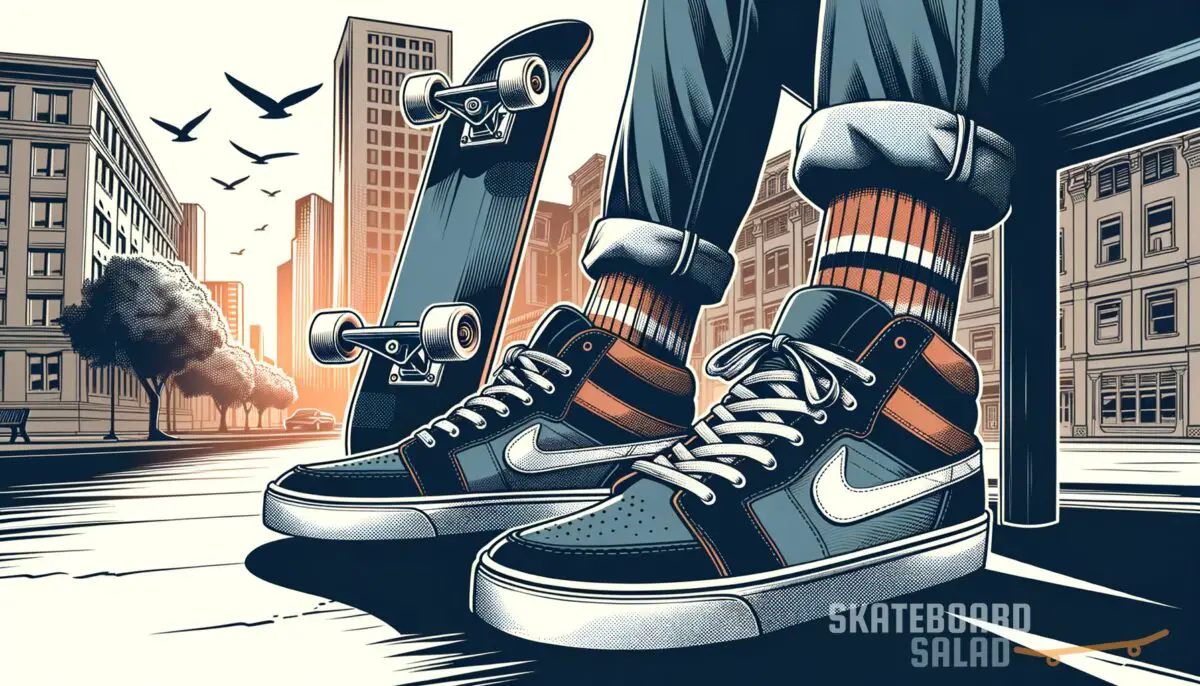Are you ready to tackle the pavement jungle? Well, hold on to your trucks because we’re breaking down the most common skateboarding injuries, a topic every beginner should be familiar with. I don’t intend to bum you out or anything, but according to UPMC Sports Medicine, those who’ve taken up skateboarding in the last week make up a third of all skating injuries each year. That’s a lot of new skaters biting the dust. Don’t fret, though; this isn’t a doom-and-gloom session, and we’re here to arm you with knowledge. Let’s dive straight in.
What are the top ten most common skateboarding injuries?
Life on four independent wheels is most often a joyride, but sometimes it can be a bit of a rough journey. While taking a spill is all part of the game, it’s important to know the most common injuries skateboarders face and how to prevent them. To keep your love for shredding concrete alive, here goes an expert guide, breaking down the five most common skateboarding injuries and how to protect yourself from them.
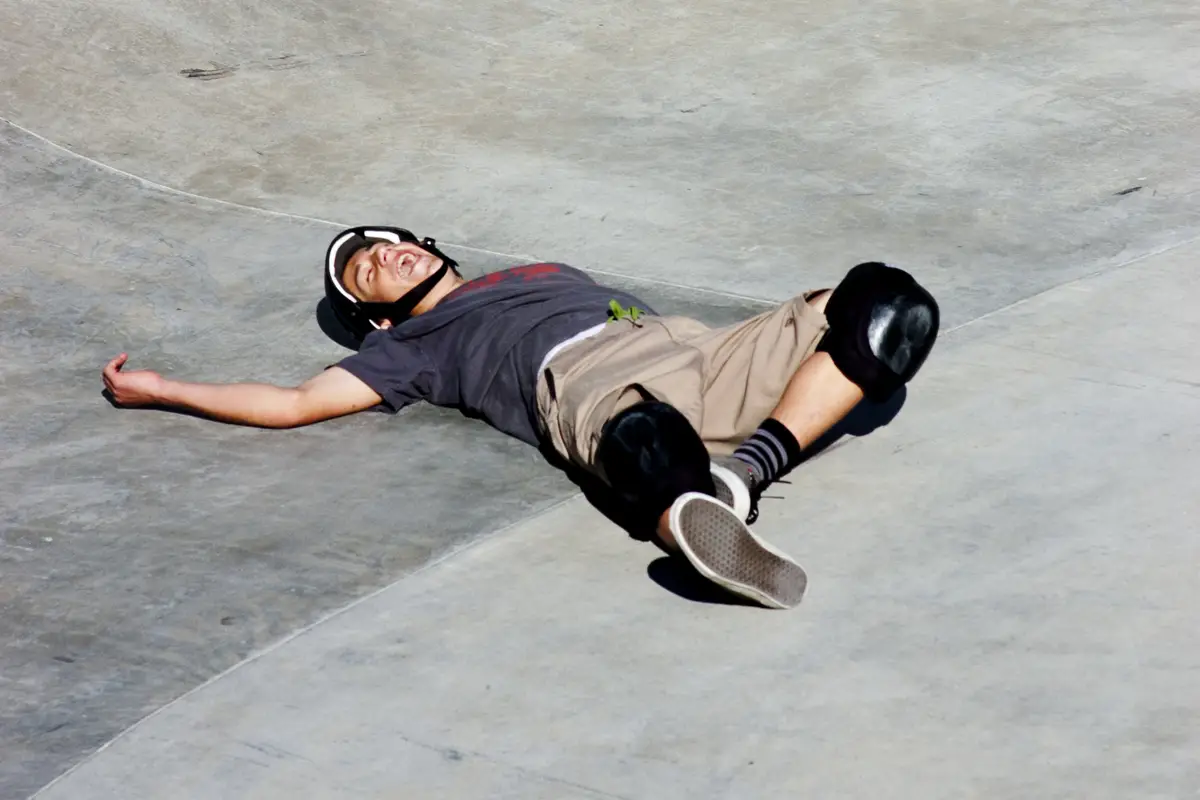
1. Head injuries
As a skater, protecting your crown is crucial. The head is a premium target during falls, and injuries range from mild bruising to, at their worst, permanent impairment and, in rare cases, death. Yes, it sounds intense, but it’s better to be aware than sorry, right? To prevent head injuries, consider wearing a helmet, even if some of the legendary shredders wouldn’t think of it.
Remember, understanding your spatial positioning comes in handy when you’re off-balance and about to fall. Falling forward? Brace for impact with your hands. But if you’re falling backward, tuck your chin and roll with the spill. Remember to stay in control of your board, as losing control usually incurs the most serious injuries.
2. Hand, wrist, and shoulder injuries
Falling isn’t formal; it’s sketchy. The instinct to fall with your hands often results in wrist, hand, and even shoulder injuries. Young skaters often face these types of injuries as they navigate through their early years’ enthusiasm and miscalculation.
Preventing these injuries often means challenging your primal instincts. Instead of extending your hands during a fall, try redirecting your momentum into a roll. Knee pads can also be a solid choice, allowing you to slide safely without putting your hands in harm’s way.
3. Hip and thigh injuries
Building up to your best Ollie involves quite a bit of risk to your hips and thighs—another usual injury spot in skateboarding. Surprisingly, these high-impact injuries usually occur when a skater is mid-jump and loses control of the board. Preventing hip and thigh injuries pretty much comes down to skill and experience. It’s crucial to take things at your own pace and increase the complexity of your tricks gradually.
4. Ankle injuries
As the literal pivot point for all your board action, your ankles are a hotspot for injuries. It’s not uncommon for skaters to roll, sprain, or even break their ankles when they land awkwardly after a trick or just start their journey in skating.
Proper footwear, ankle-strengthening exercises, and, most importantly, listening to your body can do wonders to prevent ankle injuries. Give yourself enough time to recover if you’re feeling a bit sore after a long day of shredding.
5. Knee injuries
Uneven landings, sudden shifts in body weight, or wiping out while cruising at high speeds often result in knee injuries. Skaters are known for being prone to knee ligament tears, dislocated kneecaps, and fractures.
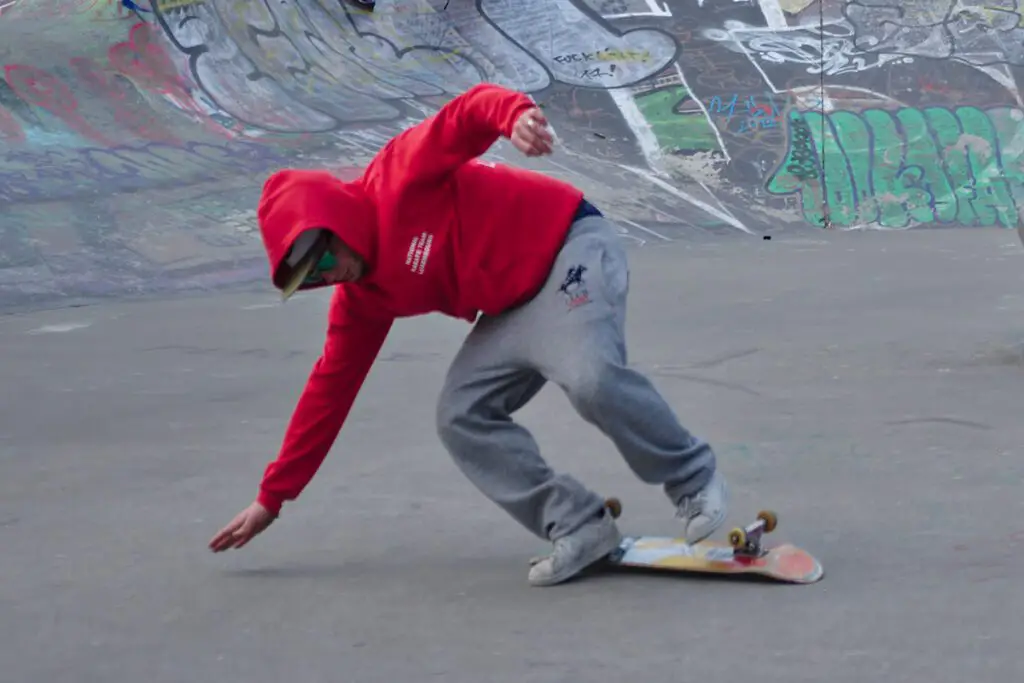
To keep your knees safe on the skatepark, try strapping on some knee pads before hitting the streets. Also, engaging in exercises that strengthen the muscles around your knees can improve stability and help prevent injuries.
6. Elbow injuries
After a sudden jolt or a harsh fall, elbow injuries sometimes take a long time to heal, particularly if it’s a broken bone.
7. Foot injuries
As the launchpad for every trick, feet are susceptible to bruises, sprains, and fractures. Always wear cushioned footwear while skating.
8. Lower back injuries
Repeated bending, twisting, and high impact can often lead to lower back injuries. Always maintain good posture while skating.
9. Abrasions and lacerations
From scrapes to deep cuts, these are frequent occurrences from skating and could lead to scars or infections if not properly treated.
10. Fractures
Fractures, especially with young skaters, tend to occur from repeated high-impact activities and falls. Always ensure to warm up before skating big.
Enjoi Whitey Panda Complete Skateboard

Enjoi Whitey Panda Complete Skateboard
What are the best ways to prevent head injuries while skateboarding?
“Skate or die” might be the mantra for some, but we’re partial to “Skate and, you know, don’t die.” As mentioned, head injuries are one of the most common injuries skateboarders face, posing the greatest danger to young riders. Falling, running into cars, road hazards, attempting tricks beyond your skill level, and even skating on irregular surfaces can lead to a bad case of brain rattle.
While a helmet will definitely save you, it’s not always the go-to piece of gear. So, how do you avoid smacking your nose on the ground? Here are a few simple tricks:
- If you’re falling forward, put your hands out to catch yourself.
- Fancy a bit of style? Try a roll-away move like Nikhal Smith
- Falling backward? Tuck your chin into your chest and hope for the best.
Skilling-dependent injury isn’t uncommon either, and it’s something we talked about in the tricks you can learn fast guide.
How do you prevent hand, wrist, and shoulder injuries when skateboarding?
It’s not only your head that’s at risk—our skating brethren under the age of 15 often find themselves in the ER with hand, wrist, and shoulder injuries. As newbies in the skate scene, they usually overestimate their skills and underestimate the damage of a bad spill.
“One of the reasons young skaters encounter more injuries is because of their higher center of gravity and slower reaction time”
One of the reasons young skaters encounter more injuries is because of their higher center of gravity and slower reaction time. But hey, don’t feel bad. Even Tony Hawk started somewhere. Rest assured, the more you shred, the better your balance and coordination will become.
When it comes to preventing injuries, the trick is to realize what your body does during a fall. The natural instinct to protect your head usually means your hands take the brunt of the impact, potentially causing injuries. Here’s a surefire method to decrease the risk: Instead of extending your hands to brace the impact, try learning how to roll out of a fall or slide on your knee pads.
It’s really not that different from the road to becoming a pro skater. Just always remember this golden rule: be aware of what you’re capable of, and always, always wear your safety gear. You can check out some honest skateboarding advice here on how to progress safely in your skateboarding journey.
What are some other tips for preventing skateboarding injuries?
In the world of skateboarding, there’s more to injury prevention than just being careful and donning protective gear. Here are a couple more tips for staying injury-free:
- Regular strength and coordination training can improve your control over the board
- Maintaining flexibility reduces the risk of pulling a muscle
- Always inspect your skateboard for any faults before every ride
Do’s and don’ts of preventing skateboarding injuries
Skateboarding doesn’t mean throwing caution to the wind. Sticking to some fundamental guidelines can drastically reduce the chance and severity of injuries. Let’s take a closer look:
| Do’s | Don’ts |
|---|---|
| Wear protective gear: helmets, elbow pads, knee pads, wrist guards, and closed shoes. | Skate without protective equipment. |
| Choose the right skateboard for your activity (e.g., street, park, longboard). | Use a damaged or malfunctioning skateboard. |
| Check your skateboard for any signs of wear or damage before each session. | Overlook regular maintenance and checks of your skateboard. |
| Practice in safe environments like skate parks or areas with minimal traffic. | Skate in busy streets, dark areas, or places with poor visibility. |
| Learn the basics first, such as how to fall safely, stop, and balance. | Attempt advanced tricks before mastering the fundamentals. |
How I deal with skateboarding injuries
Here’s a personal anecdote. I remember my first major injury. I was trying a new trick beyond my skill level (a classic mistake) and ended up with a sprained wrist. It took a couple of weeks for me to get back on the board, and those weeks felt like an eternity.
“In skateboarding, you learn as you grow. Just remember, no matter how experienced you are, safety should always be your prime concern.”
That period pushed me to realize the importance of gradual progression in skateboarding—it’s not a race, it’s a marathon. The whole experience made me reflect on the culture of skateboarding and the collective respect we have for progression and safety in our community. While the trick I was trying to nail took time to master, I now understand that every journey in skateboarding is unique and should not be rushed.
In skateboarding, you learn as you grow. Just remember, no matter how experienced you are, safety should always be your prime concern. Skate safe, everyone!
If you are a visual learner, check out the video below from YouTube.
Frequently Asked Questions (FAQ)
Skateboarding, like other extreme sports, comes with plenty of questions about safety, skills, and the related art of managing skate-related injuries. Here are answers to some of the most frequent questions that newbies and seasoned skaters often ask:
Why are injuries so common in skateboarding?
Skateboarding is a high-impact sport with a lot of room for unpredictable movements, which increases the risk of injuries. However, protective measures like wearing safety gear and learning proper fall techniques can significantly reduce the risk.
The majority of skateboard injuries just happen to boys under 15. Why is that?
Boys under the age of 15 often face more skateboarding injuries, primarily because of their natural curiosity and daredevil approach, which often overshadow their sense of self-preservation. Also, young skaters tend to overestimate their skills, leading to more severe spills.
What preventive measures can be taken to avoid skateboard injuries?
First and foremost, always wear protective gear—a helmet, elbow and knee pads, and wrist guards. Additionally, take things slow and increase your skills incrementally. Also, learning proper fall techniques can reduce the impact of a spill. Read through our protection gear guide for more advice.
What should I do when a serious injury occurs while skateboarding?
Seek immediate medical help and follow all subsequent medical advice for recovery. It’s important not to rush the healing process. When you feel ready to return, ease back into skating slowly.
Final thoughts
In skateboarding, just as in life, you win some, you lose some, and sometimes you might end up with a gnarly injury. But hey, that’s part of the game. One thing’s for sure: understanding the most common skateboarding injuries and knowing how to prevent them can make the ride smoother and safer. Learning these preventive measures will allow you to enjoy your sessions and progress faster in your skateboarding journey.
Have you ever encountered any of these skateboarding injuries? How did you deal with it? And did I cover everything you wanted to know? Let me know in the comments section below. I read and reply to every comment. If you found this article helpful, share it with a friend, and check out my full blog for more tips and tricks on skateboarding. Thanks for reading. Stay stoked, and keep shredding safely!
Key takeaways
Alright, shredders! This article covered common skateboarding injuries and their prevention. Here are some key takeaways:
- Head and wrist injuries are among the most common skateboarding injuries.
- Tuck your chin in and try to roll away when you fall to avoid severe injuries.
- Young skaters often face more injuries due to higher centers of gravity, slower reaction times, and a tendency to overestimate their abilities.
- To avoid skateboarding injuries, ensure to wear safety gear, learn proper fall techniques, and gradually build up your skill level.
- Always be aware of your surroundings when skating, and treat it as a marathon, not a sprint.



